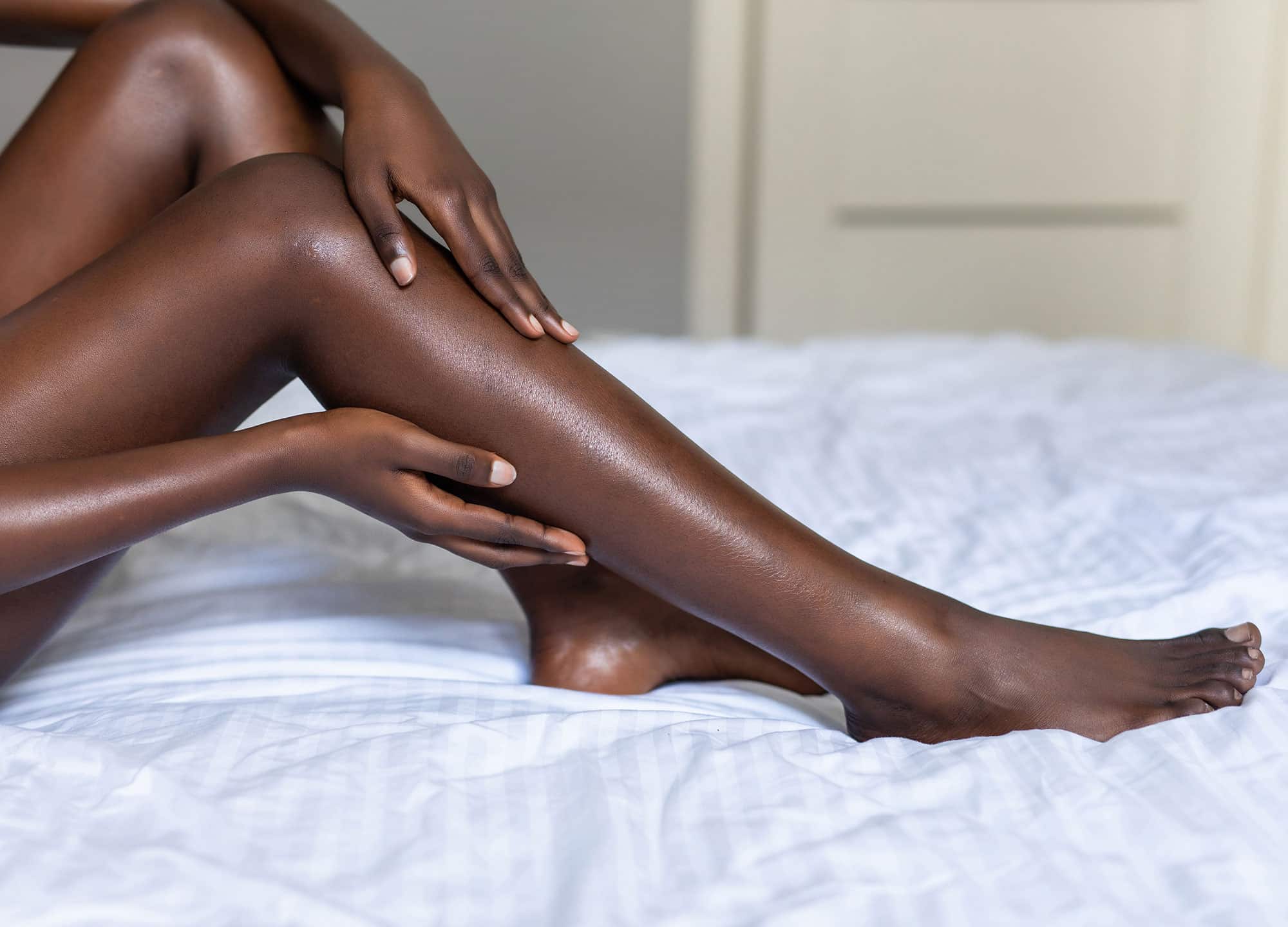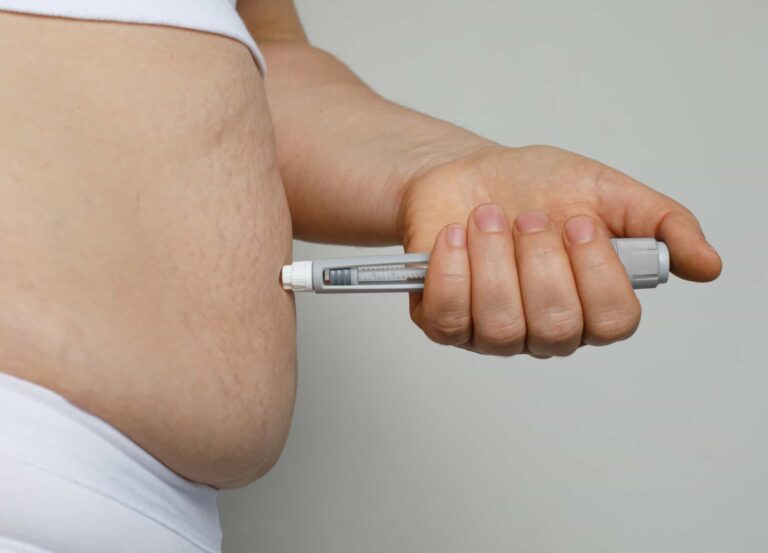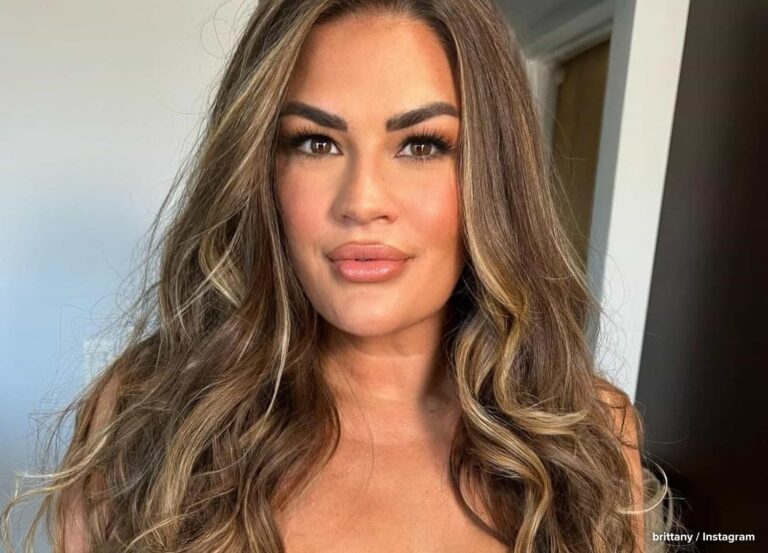Wrinkles, dark spots, sagging—these concerns certainly aren’t exclusive to the face. They can also pop up on the skin on your body, becoming noticeably more visible as warmer weather rolls around and we shed layers of clothing. The good news? Many of the same devices and treatments doctors rely on for the face can be equally as beneficial for body skin. In considering which of these is right for you, what you’re trying to treat is more important than where you’re trying to treat it.
“Most of these treatments will work the same anywhere on the body,” says New York City board-certified dermatologist Dr. Paul Jarrod Frank. Think about your skin concerns—are you trying to address superficial sun damage or deeper issues, such as laxity? This is the best way to determine which procedure will be the most effective, he adds. Just be prepared to spend quite a bit more on your body than you would on your face. “Body treatments are generally more expensive, given the larger areas being treated,” says Dr. Frank, who notes that treatments can sometimes be twice as expensive as when they’re being used on the face alone.
Ahead, five of the best treatments for addressing spots, sagging, and more, on the skin below your chin.
The treatment: BroadBand Light Therapy
What it’s good for: mild to moderate signs of sun damage
Dr. Frank says BBL is one of his go-tos for (usually younger) patients looking to address more mild to moderate signs of sun damage, such as hyperpigmentation and uneven tone. It’s similar to intense pulsed light (IPL) technology—a broad-spectrum pulsed light of many wavelengths that can target multiple skin concerns—but an advanced form that is much more efficient and effective and can be performed very quickly, he explains. (For context, he says you can treat the arms and legs in just 30 minutes.) It works well anywhere on the body, even on larger areas such as the chest and back, and doesn’t require numbing. Oftentimes, just one session is sufficient—and while you will need to stay out of the sun for two to three weeks after, there’s really no downtime.
The treatment: Erbium YAG
What it’s good for: more severe signs of sun damage
To address more extensive sun damage—brown spots, red spots, mottling, wrinkles—Dr. Adam Schaffner, a board-certified plastic surgeon in New York City, says this laser is an excellent way to resurface the skin. In more extreme cases, it can even be paired with a fractionated CO2 laser: “The two complement one another and can be used together, in a feathered fashion, so long as you don’t go too deep,” he says. Just plan on a week or so of downtime. Additionally—particularly if you’re treating an area that’s constantly exposed to the sun (think the neck and decolletage)—it may take a while to see the best results. According to Dr. Schaffner, a series of several treatments, spaced six months apart, is often needed.
The treatment: biostimulatory fillers
What it’s good for: crepiness, sagging
For helping to build collagen and tighten the skin, Dr. Frank favors Sculptra and Radiesse. Unlike hyaluronic acid fillers, which work by attracting and absorbing water to create volume and fullness, these biostimulatory fillers work by triggering the body to create more collagen, a boon for improving textural issues such as crepiness and even sagging. That being said, “you need to have collagen to build collagen,” notes Dr Frank, meaning that these are most effective on areas where the skin is already slightly thicker to begin with; he tends to use them to address laxity on the fronts of the thighs and the backs of the knees. Also nice: it’s a treatment that has to be done only once per year. However, this is an instance where the price tag is notably higher for the body than the face. For context, Dr. Frank charges anywhere between $3,500 to $7,500 when using these types of fillers on the body compared to around $2,800 for the face.
The treatment: VirtueRF
What it’s good for: uneven texture and tone, skin laxity
Radiofrequency microneedling offers the unique advantage of addressing multiple layers of the skin at the same time. The depth of penetration of the needles can be adjusted anywhere from one to five millimeters, so you can even get down into the fatty layer of the skin, notes Dr. Frank. Translation? Not only does this help improve superficial textural and tone issues, but it also delivers nice skin tightening effects, he explains. He uses it frequently on the décolletage, the thighs, and the inside of the arms, noting that the device’s new, larger handpiece makes it ideal for these and other body parts. Three treatments, spaced a month apart, are usually required, with a three- to five-day recovery period after each.
The treatment: BodyTite
What it’s good for: skin laxity
According to Dr. Schaffner, subdermal radiofrequency treatments, such as BodyTite, are far more effective than other noninvasive tightening treatments when it comes to building collagen and tightening skin on the body, where the dermis is thicker. “Delivering the heat subcutaneously means you can get more of it without ‘cooking’ the surface of the skin,” he says. Dr. Frank adds that BodyTite is also a good middle ground for those who may not want or need the full-on surgical option of a tummy tuck or thigh lift (though FYI, some doctors perform BodyTite under general anesthesia). He often pairs it with liposuction for maximum results, which he says can show up as early as one month after; it takes three to six months to see the full results. Expect some mild bruising and/or swelling for a few days after.











